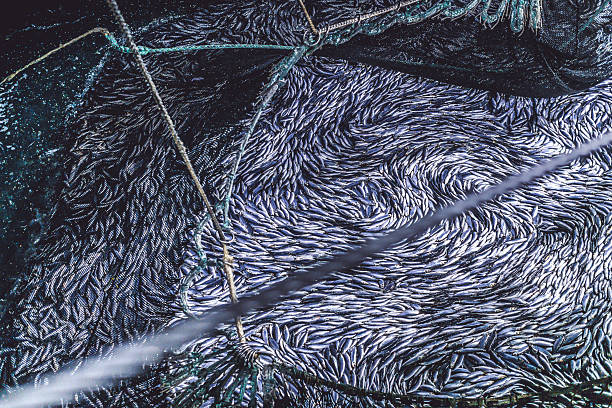The fishery industry stands as a cornerstone of global food production, providing sustenance and livelihoods to millions around the world. However, with increasing concerns over environmental sustainability, the industry finds itself at a critical juncture. In this dynamic landscape, governmental regulations and environmental sustainability standards have emerged as pivotal forces, steering the course of the fishery sector.
In this blog post, we embark on a journey through time, tracing the evolution of regulations and sustainability standards that have left an indelible mark on the industry. We’ll delve into the historical precedents that paved the way for modern-day policies, and explore the intricate tapestry of regulations that govern the harvest and conservation of our aquatic resources.
As we navigate this narrative, it becomes evident that the interplay between regulations and sustainability is not merely a matter of compliance, but a profound effort to safeguard our oceans and ensure the longevity of this vital industry. This exploration will shed light on both the challenges faced by the fishery sector and the opportunities that arise from aligning with these regulatory frameworks.
Join us on this expedition as we uncover the multifaceted relationship between regulations, sustainability, and the fishery industry. Through this journey, we aim to equip you with insights that will not only deepen your understanding of this complex field but also empower you to make informed decisions regarding investments and practices that align with the ever-evolving landscape of fishery regulations.
Historical Perspective
To truly grasp the significance of contemporary fishery regulations and sustainability standards, it’s imperative to take a step back in time. The evolution of policies governing the fishery industry is a testament to humanity’s growing awareness of the delicate balance that exists within our oceans.
Centuries ago, when maritime trade and fishing were the lifeblood of coastal communities, regulations were often informal and localized. Communities would establish customary practices to ensure that the bounties of the sea were not depleted beyond recovery. These early efforts laid the foundation for more formalized regulations that would emerge in later centuries.
The 20th century witnessed a paradigm shift in fishery management. As technologies advanced and global demand for seafood surged, governments recognized the need for centralized regulation. The establishment of exclusive economic zones (EEZs) and the formation of international agreements aimed to control overfishing and protect shared marine resources.
One pivotal moment in this historical narrative was the adoption of the United Nations Convention on the Law of the Sea (UNCLOS) in 1982. UNCLOS not only defined the rights and responsibilities of nations concerning the use of the world’s oceans but also established principles for the conservation and management of living resources.
Simultaneously, the emergence of environmental movements in the latter half of the 20th century amplified calls for sustainable fishery practices. NGOs and advocacy groups played a crucial role in raising awareness about the ecological impact of unregulated fishing.
Today, this historical perspective serves as a backdrop against which we can assess the effectiveness and challenges of current regulations and sustainability standards. It reminds us that the quest for a balanced and sustainable fishery industry is rooted in a legacy of stewardship that spans generations.
Current Regulatory Framework
As we transition from the annals of history to the present day, it’s crucial to examine the intricate web of regulations and sustainability standards that currently govern the fishery industry. These contemporary frameworks are essential for ensuring the responsible management of our oceans and the sustainability of seafood production.
Overview of Existing Governmental Regulations:
Governmental regulations form the backbone of fishery management in most nations. They encompass a wide array of aspects, including catch limits, fishing seasons, gear restrictions, and monitoring and enforcement mechanisms. The specific regulations vary from country to country but share a common goal: to prevent overfishing and protect marine ecosystems.
Many countries have implemented science-based management approaches, relying on data and research to set sustainable catch limits. These measures aim to strike a delicate balance between meeting the demand for seafood and preserving fish stocks for future generations.
Key Environmental Sustainability Standards:
In addition to national regulations, various international bodies and organizations have established environmental sustainability standards. Perhaps the most notable is the Marine Stewardship Council (MSC), a global nonprofit that sets rigorous criteria for sustainable fishing and seafood traceability. Products bearing the MSC label are certified as coming from well-managed, sustainable fisheries.
Similarly, the Aquaculture Stewardship Council (ASC) focuses on sustainable practices within the aquaculture industry, ensuring that farmed seafood meets strict environmental and social criteria.
These standards extend beyond just sustainable harvesting practices; they also address the social and ethical dimensions of the fishery industry, promoting fair labor practices and responsible sourcing.
In this contemporary landscape, fishery management is no longer confined to national borders. International cooperation and agreements, such as those under the Food and Agriculture Organization (FAO) of the United Nations, play a pivotal role in harmonizing regulations and fostering responsible fishing practices on a global scale.
Understanding the complexities of these regulatory frameworks is essential for all stakeholders in the fishery industry, from fishermen and seafood processors to consumers and investors. The combined efforts of governments, international organizations, and industry players are instrumental in ensuring the continued vitality of our oceans and the sustainability of this vital sector.
Impact on the Fishery Industry

The regulations and sustainability standards that govern the fishery industry have far-reaching effects on various facets of this vital sector. Understanding these impacts is crucial for all stakeholders, as they shape the dynamics of production, trade, and conservation efforts.
Positive Effects of Regulations on Conservation Efforts:
One of the most significant positive impacts of regulations is their contribution to conservation efforts. By imposing catch limits, regulating fishing gear, and establishing protected areas, governments and international bodies aim to prevent overfishing and protect vulnerable species and habitats.
These measures have shown tangible results in numerous regions. In areas where regulations are effectively enforced, we observe the resurgence of fish populations, allowing ecosystems to regain their natural balance. This not only benefits the environment but also secures the livelihoods of those dependent on the fishery industry.
Challenges Faced by the Industry Due to Stringent Standards:
While regulations are essential for safeguarding marine resources, they also present challenges for the fishery industry. Compliance with strict catch limits and gear restrictions can pose operational and financial burdens on fishermen. Small-scale, artisanal fisheries, in particular, may face difficulties in adapting to these regulatory changes.
Moreover, achieving and maintaining certification under sustainability standards like MSC or ASC requires significant investments in time, resources, and infrastructure. This can be a barrier for smaller players in the industry, potentially leading to market consolidation and limiting the diversity of fishery operations.
Balancing the positive impacts of regulations with the challenges they pose is a delicate endeavor. It calls for collaborative efforts among governments, industry stakeholders, and conservation groups to find solutions that ensure both environmental sustainability and the economic viability of the fishery sector.
As we navigate this complex landscape, it’s important to recognize that the ultimate goal of these regulations is not to stifle the industry, but rather to steer it towards a path of long-term viability and resilience. By addressing these challenges head-on, we can work towards a fishery industry that thrives in harmony with our oceans.
Investment Opportunities
As the fishery industry navigates the currents of regulations and sustainability standards, astute investors have a unique opportunity to align their portfolios with this evolving landscape. Investing in sustainable fisheries not only offers potential financial returns but also contributes to the preservation of our oceans.
Identifying Trends in Sustainable Fisheries:
One of the key strategies for investors is to identify emerging trends in sustainable fisheries. This involves keeping a pulse on technological advancements, innovative practices, and market shifts. For instance, technologies like AI-driven fisheries monitoring and aquaculture innovations are reshaping the industry, presenting investment opportunities in forward-looking ventures.
Moreover, understanding consumer preferences and market demands for sustainably sourced seafood can provide valuable insights for investment decisions. The growing awareness and demand for eco-certified products offer a promising market niche for investors.
Strategies for Aligned Investments:
Investors seeking to capitalize on the potential of sustainable fisheries can explore various avenues:
1.Direct Investments in Fisheries Operations:
This involves investing in fishing enterprises that prioritize sustainability and adhere to environmental regulations. These operations often focus on responsible harvesting practices and may hold certifications like MSC or ASC.
2.Technology and Innovation Ventures:
Investing in companies that develop and deploy technologies aimed at enhancing sustainability in fisheries can be a lucrative opportunity. These technologies may range from efficient fishing gear to data-driven solutions for monitoring and management.
3.Aquaculture and Sustainable Seafood Production:
Aquaculture, when practiced responsibly, can play a vital role in meeting global seafood demand sustainably. Investing in well-managed aquaculture ventures can be a strategic move.
4.Supporting Sustainable Supply Chains:
Investments in companies that facilitate the traceability and distribution of sustainably sourced seafood can be a critical part of the ecosystem. This may involve logistics, processing, and retailing of eco-certified products.
It’s important for investors to conduct thorough due diligence and consider factors such as regulatory compliance, environmental impact assessments, and long-term sustainability plans when evaluating opportunities in the fishery industry.
By strategically allocating capital towards sustainable fisheries, investors not only have the potential to achieve financial gains but also contribute to the broader goal of preserving our oceans and ensuring a thriving, responsible fishery industry for generations to come.
Innovations and Technologies
In the dynamic landscape of the fishery industry, innovations and technologies are driving significant advancements in sustainability and regulatory compliance. These forward-looking solutions are reshaping the way we interact with our oceans, offering promising avenues for both industry players and conservationists.
Technological Advancements Aiding Compliance with Regulations:
1.Smart Monitoring Systems:
Advanced technologies, including satellite imagery, GPS tracking, and IoT sensors, enable real-time monitoring of fishing activities. These systems not only enhance transparency but also assist in enforcing compliance with catch limits and protected areas.
2.Data Analytics and AI:
Artificial intelligence and data analytics are revolutionizing fisheries management. Predictive modeling and machine learning algorithms can analyze vast datasets to provide insights into fish behavior, stock assessments, and even predict potential compliance breaches.
3.Selective Fishing Gear:
Innovations in fishing gear design allow for more targeted and species-specific harvesting. By reducing bycatch and minimizing environmental impact, these technologies align with sustainability objectives.
4.Aquaculture Technologies:
Sustainable aquaculture practices are becoming increasingly sophisticated. Recirculating aquaculture systems (RAS), integrated multi-trophic aquaculture (IMTA), and land-based fish farming are among the innovations that promote responsible seafood production.
Sustainable Practices and Technologies Reshaping the Industry:
1.Eco-Friendly Aquaculture Feed:
The development of alternative feeds, such as plant-based and insect-based options, reduces the reliance on wild-caught fish for aquaculture feed, contributing to a more sustainable supply chain.
2.Ocean Farming and Seaweed Cultivation:
Emerging practices like ocean farming, which involves growing various species of seaweed and shellfish, play a role in carbon sequestration and contribute to a healthier marine ecosystem.
3.Closed-Loop Systems:
Closed-loop aquaculture systems minimize environmental impact by recycling water and waste, creating a more sustainable and efficient production model.
These innovations and technologies represent a beacon of hope in the pursuit of a more sustainable and regulated fishery industry. By embracing these advancements, stakeholders can not only meet compliance standards but also forge a path toward a more resilient and thriving marine environment.
The Role of Stakeholders
In the intricate ecosystem of the fishery industry, the collaboration and concerted efforts of various stakeholders play a pivotal role in shaping its trajectory towards sustainability and responsible management. From governments to non-governmental organizations (NGOs) and industry players, each entity brings a unique perspective and contribution to the table.
Government, NGOs, and Industry Collaboration for Sustainable Practices:
1.Governmental Agencies:
Regulatory bodies and government agencies are at the forefront of fishery management. They establish and enforce policies, monitor compliance, and conduct research to inform decision-making. Effective communication and collaboration with industry stakeholders are crucial for the success of these efforts.
2.Non-Governmental Organizations (NGOs):
Environmental advocacy groups, such as Oceana, World Wildlife Fund (WWF), and Sustainable Fisheries Partnership, play a vital role in raising awareness about sustainable fishing practices. They engage in research, advocacy, and education to promote responsible management and conservation.
3.Industry Associations and Fishermen’s Cooperatives:
These organizations represent the interests of fishermen and fisherwomen. They serve as a bridge between the industry and regulators, advocating for policies that support both economic viability and environmental sustainability.
4.Scientific Community:
Researchers and scientists provide invaluable insights through studies on fish stocks, ecosystem dynamics, and the impacts of fishing practices. Their findings inform evidence-based decision-making in fishery management.
Consumer Awareness and Demand for Sustainable Seafood:
Consumer preferences have a powerful influence on the fishery industry. Heightened awareness about sustainable seafood choices has led to a growing demand for eco-certified products. Labels like MSC and ASC provide consumers with confidence that the seafood they purchase aligns with responsible fishing practices.
Additionally, retailers and restaurants have a crucial role to play in driving sustainability. They can choose to source seafood from certified fisheries and promote eco-friendly practices, thereby influencing the behavior of both suppliers and consumers.
The collaboration and synergy among these stakeholders form the cornerstone of a sustainable and responsibly managed fishery industry. Through open dialogue, shared objectives, and a mutual commitment to the well-being of our oceans, we can navigate the challenges and opportunities that lie ahead.
Conclusion
As we conclude our exploration of the intricate relationship between regulations, sustainability, and the fishery industry, one thing becomes abundantly clear: the future of this vital sector rests on a delicate balance between responsible management and ecological stewardship.
The journey through history has revealed the evolution of regulations from localized customs to globally coordinated efforts. These measures, born out of necessity and propelled by environmental consciousness, have transformed the way we interact with our oceans.
Today, a sophisticated regulatory framework, coupled with cutting-edge technologies and sustainable practices, stands as a testament to our collective commitment to preserving marine ecosystems. The positive impacts on conservation efforts, exemplified by the recovery of once-depleted fish stocks, serve as beacons of hope for the industry’s future.
Investment opportunities beckon, offering a chance to not only secure financial returns but also contribute to the sustainable future of the fishery sector. Astute investors can play a vital role in driving innovations, supporting responsible practices, and influencing market dynamics.
Crucially, the collaboration of stakeholders – from governments and NGOs to industry players and consumers – remains the linchpin of progress. Together, we have the power to shape policies, advocate for sustainable practices, and inspire a sea change in how we approach the fishery industry.
As we look ahead, the dynamic landscape of the fishery industry continues to evolve. Emerging technologies, expanding protected areas, and a growing emphasis on climate resilience are but a few of the factors that will chart the course forward.
In our collective hands lies the responsibility to ensure that the fishery industry not only endures, but thrives, providing sustenance, livelihoods, and ecological integrity for generations to come. By embracing the lessons of the past and seizing the opportunities of the future, we set sail towards a more sustainable and resilient fishery industry.
Thank you for joining us on this journey. Together, we can chart a course towards a future where the bounty of our oceans is cherished, protected, and enjoyed in harmony with nature.












